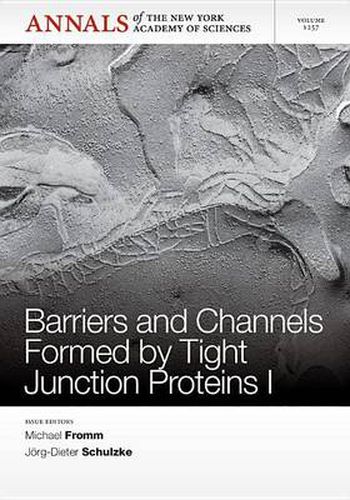Readings Newsletter
Become a Readings Member to make your shopping experience even easier.
Sign in or sign up for free!
You’re not far away from qualifying for FREE standard shipping within Australia
You’ve qualified for FREE standard shipping within Australia
The cart is loading…






Tight junctions between epithelial and endothelial cells form selective barriers and paracellular channels and regulate paracellular transport of solutes, immune cells, and drugs. More specifically, tight junctions consist of proteins that laterally interconnect neighboring cells of epithelia and endothelia. Certain proteins seal the tight junction, so that a nearly impermeable barrier develops, whereas others form channels that allow for permeation between the cells. Recent investigations have focused on tight junction proteins, belonging to the claudin family (claudins-1 to -27 in humans) and the newly defined group of TAMP (three proteins: occludin, Marvel-D2, and tricellulin). Barriers and Channels Formed by Tight Junction Proteins I showcases work in this area clustered around three major themes: the molecular properties of tight junctions, for example, the role of the claudin family of proteins and the formation of ion and charge-selective channels; the regulation of tight junction and barrier functions via genetic mechanisms and scaffold protein mediation; and the functional role of the tight junction in various tissues, such as the skin, lungs, endothelia, and nervous system
NOTE: Annals volumes are available for sale as individual books or as a journal. For informatio.n on institutional journal subscriptions, please visit http://ordering.onlinelibrary.wiley.com/subs.asp?ref=1749-6632&doi=10.111/(ISSN)1749-6632.
ACADEMY MEMBERS: Please contact the New York Academy of Sciences directly to place your order (www.nyas.org). Members of the New York Academy of Science receive full-text access to the Annals online and discounts on print volumes. Please visit http://www.nyas.org/MemberCenter/Join.aspx for more information about becoming a member.
$9.00 standard shipping within Australia
FREE standard shipping within Australia for orders over $100.00
Express & International shipping calculated at checkout
Tight junctions between epithelial and endothelial cells form selective barriers and paracellular channels and regulate paracellular transport of solutes, immune cells, and drugs. More specifically, tight junctions consist of proteins that laterally interconnect neighboring cells of epithelia and endothelia. Certain proteins seal the tight junction, so that a nearly impermeable barrier develops, whereas others form channels that allow for permeation between the cells. Recent investigations have focused on tight junction proteins, belonging to the claudin family (claudins-1 to -27 in humans) and the newly defined group of TAMP (three proteins: occludin, Marvel-D2, and tricellulin). Barriers and Channels Formed by Tight Junction Proteins I showcases work in this area clustered around three major themes: the molecular properties of tight junctions, for example, the role of the claudin family of proteins and the formation of ion and charge-selective channels; the regulation of tight junction and barrier functions via genetic mechanisms and scaffold protein mediation; and the functional role of the tight junction in various tissues, such as the skin, lungs, endothelia, and nervous system
NOTE: Annals volumes are available for sale as individual books or as a journal. For informatio.n on institutional journal subscriptions, please visit http://ordering.onlinelibrary.wiley.com/subs.asp?ref=1749-6632&doi=10.111/(ISSN)1749-6632.
ACADEMY MEMBERS: Please contact the New York Academy of Sciences directly to place your order (www.nyas.org). Members of the New York Academy of Science receive full-text access to the Annals online and discounts on print volumes. Please visit http://www.nyas.org/MemberCenter/Join.aspx for more information about becoming a member.